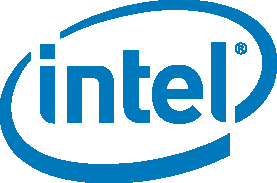When choosing a Windows laptop, the decision often boils down to two processor options: AMD or Intel. While AMD continues to gain popularity for its price-to-performance ratio, Intel remains the more widely recognized choice. We’re all familiar with Intel’s iconic Core i3, i5, and i7 processors, where the i3 sits below the i5 but above the i7 in terms of power; we explained it all here. However, what about the 7th, 8th, 9th, 10th, 11th, and 12th generations we hear about in the PC ads? Join us as we review Intel’s generations, unraveling the incremental upgrades they bring to the table.
First Generation (Nehalem, 2008-2009): Unleashing New Possibilities
The journey of Intel Core processors began with the Nehalem microarchitecture, introducing the Core i3, i5, and i7 series. These processors marked a significant leap forward with improved performance, integrated memory controllers, and the advent of Hyper-Threading technology.
Second Generation (Sandy Bridge, 2011): Power Meets Efficiency
Sandy Bridge processors brought refined microarchitecture, enhanced performance, improved power efficiency, and introduced Turbo Boost Technology 2.0. This generation also witnessed the integration of Intel HD Graphics onto the processor die.
Third Generation (Ivy Bridge, 2012): Shrinking to Greatness
Building upon Sandy Bridge, Ivy Bridge introduced a smaller 22nm manufacturing process. It delivered improved graphics performance, USB 3.0 support, higher clock speeds, and a host of other advancements.
Fourth Generation (Haswell, 2013): Efficiency Refined
Haswell processors focused on power efficiency improvements and presented better integrated graphics performance. They also introduced a new socket type, LGA 1150, and advancements in overclocking capabilities.
Fifth Generation (Broadwell, 2014): Power Thriftiness Unleashed
Broadwell processors embraced a smaller 14nm manufacturing process, emphasizing significant gains in power efficiency. While the performance improvements were incremental, they made these processors ideal for mobile devices and laptops.
Sixth Generation (Skylake, 2015): Empowering the Future
Skylake processors came with DDR4 memory support, further advancements in power efficiency, enhanced integrated graphics performance, and native support for USB 3.1 and Thunderbolt 3. They paved the way for the next level of connectivity and performance.
Seventh Generation (Kaby Lake, 2016): Performance Optimization
Kaby Lake processors focused on optimizing performance and power efficiency without introducing major architectural changes. This generation ushered in support for 4K video playback and HDCP 2.2, enriching multimedia capabilities.
Eighth Generation (Kabylake-Refresh, Coffee Lake, 2017): The Core Gets Stronger
Coffee Lake processors raised the bar by introducing six-core processors in the mainstream lineup, along with higher clock speeds, improved power efficiency, and enhanced thermal management. They marked a significant leap forward in core counts.
Ninth Generation (Coffee Lake Refresh, 2018): Power Refined
Coffee Lake Refresh processors refined the ninth generation by offering higher core counts and improved performance across the board. These processors even introduced the first consumer-grade eight-core processors, elevating the standards for power and performance.
Tenth Generation (Comet Lake, Ice Lake, 2020): Innovation Unleashed
Comet Lake (Desktops) and Ice Lake (laptops) processors continued the trend of increased core counts, reaching up to ten cores for mainstream processors. They brought higher boost clock speeds, improved memory support, and enhanced AI capabilities. With technologies like Wi-Fi 6, Thunderbolt™ 3, USB 3.2 Gen 2×2, and DDR4-2933 memory support, these processors enable faster wireless, wired, and memory performance, enhancing data transfer, streaming, gaming, and multitasking experiences.
Eleventh Generation (Rocket Lake, Comet Lake-Refresh, Tiger Lake): Power Unleashed
The 11th Generation of Intel Core processors took performance and multitasking capabilities to new heights. Intel Core i9 desktop processors saw the maximum core count increase from ten to twelve. At the same time, integrated graphics performance and quality were significantly improved for processors featuring Intel® Iris® Xe Graphics or Intel® UHD Graphics 770. These processors embraced new features such as ray tracing, variable rate shading, adaptive sync, and integer scaling, delivering smoother gaming, streaming, and content creation experiences even on devices without discrete graphics cards.
12th Generation
The 12th Generation, comprising Alder Lake (Desktop and Mobile), Raptor Lake (Desktop), and Meteor Lake (Mobile), brought forth a new era of performance. Core counts were further increased, with Intel Core i9 desktop processors reaching up to sixteen cores and Intel Core i9 laptops boasting sixteen cores. This optimization led to unmatched performance and multitasking capabilities in gaming, content creation, and workstation applications.
Enhanced graphics performance and quality were once again a focus for Intel Core processors with Intel® Iris® Xe Graphics or Intel® UHD Graphics for 12th Gen Intel® Processors. The 12th Generation embraced cutting-edge features like ray tracing, variable rate shading, adaptive sync, and integer scaling. These advancements translated into seamless gaming, streaming, and content creation experiences, even without the need for discrete graphics cards.
The evolution of Intel Core processors across generations has been a journey of continuous improvement, pushing the boundaries of performance, power efficiency, and graphics capabilities. Each generation has brought incremental upgrades from Nehalem to Alder Lake and beyond, empowering users with more processing power and enhanced multimedia experiences. Whether you’re a gamer, content creator, or professional seeking unparalleled performance, the generations of Intel Core processors have something to offer, taking your computing experience to new heights.




